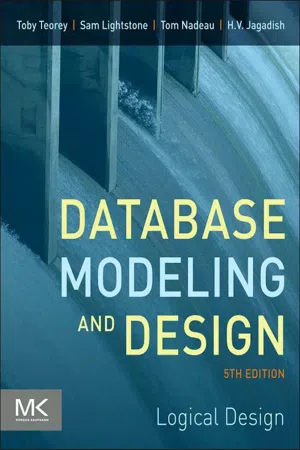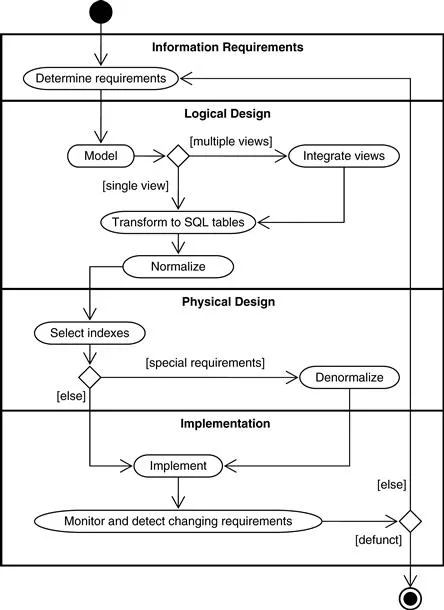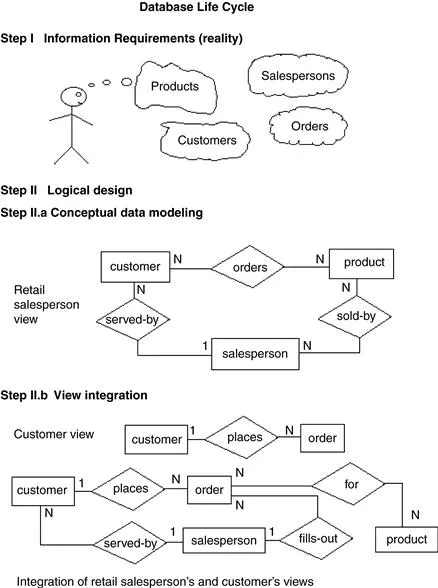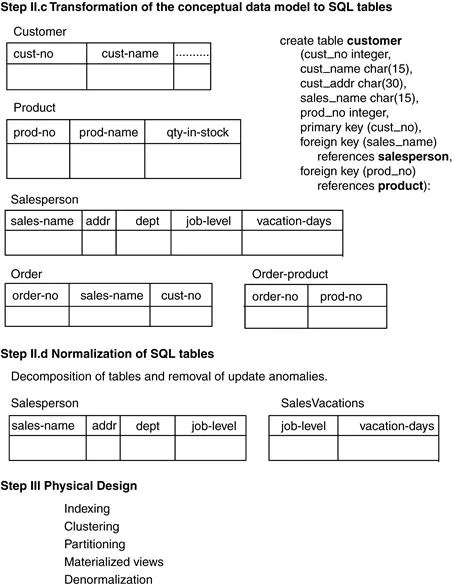
Database Modeling and Design
Logical Design
- 352 pages
- English
- ePUB (mobile friendly)
- Available on iOS & Android
Database Modeling and Design
Logical Design
About this book
Database Modeling and Design, Fifth Edition, focuses on techniques for database design in relational database systems.This extensively revised fifth edition features clear explanations, lots of terrific examples and an illustrative case, and practical advice, with design rules that are applicable to any SQL-based system. The common examples are based on real-life experiences and have been thoroughly class-tested.This book is immediately useful to anyone tasked with the creation of data models for the integration of large-scale enterprise data. It is ideal for a stand-alone data management course focused on logical database design, or a supplement to an introductory text for introductory database management.- In-depth detail and plenty of real-world, practical examples throughout- Loaded with design rules and illustrative case studies that are applicable to any SQL, UML, or XML-based system- Immediately useful to anyone tasked with the creation of data models for the integration of large-scale enterprise data
Frequently asked questions
- Essential is ideal for learners and professionals who enjoy exploring a wide range of subjects. Access the Essential Library with 800,000+ trusted titles and best-sellers across business, personal growth, and the humanities. Includes unlimited reading time and Standard Read Aloud voice.
- Complete: Perfect for advanced learners and researchers needing full, unrestricted access. Unlock 1.4M+ books across hundreds of subjects, including academic and specialized titles. The Complete Plan also includes advanced features like Premium Read Aloud and Research Assistant.
Please note we cannot support devices running on iOS 13 and Android 7 or earlier. Learn more about using the app.
Information
1
Introduction
Chapter outline






Data and Database Management
Database Life Cycle



Table of contents
- Cover Image
- Contents
- Title
- Series
- Copyright
- Dedication
- Preface
- About the Authors
- 1. Introduction
- 2. The Entity–Relationship Model
- 3. The Unified Modeling Language
- 4. Requirements Analysis and Conceptual Data Modeling
- 5. Transforming the Conceptual Data Model to SQL
- 6. Normalization
- 7. An Example of Logical Database Design
- 8. Object-Relational Design
- 9. XML and Web Databases
- 10. Business Intelligence
- 11. CASE Tools for Logical Database Design
- APPENDIX. The Basics of SQL
- References
- Exercises
- Solutions to Selected Exercises
- Glossary
- Index
- Bonus Chapter Opener
- 3. Query Optimization and Plan Selection
- A. A Simple Performance Model for Databases